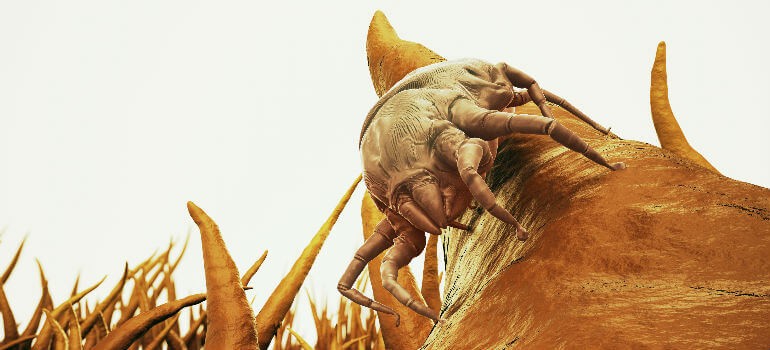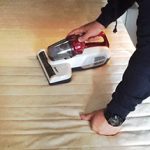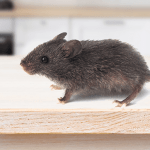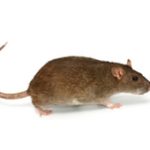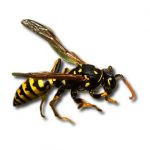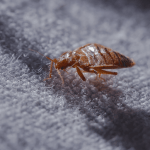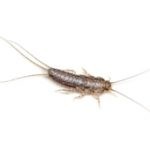Can You See Dust Mites? How to Know If You Have Them
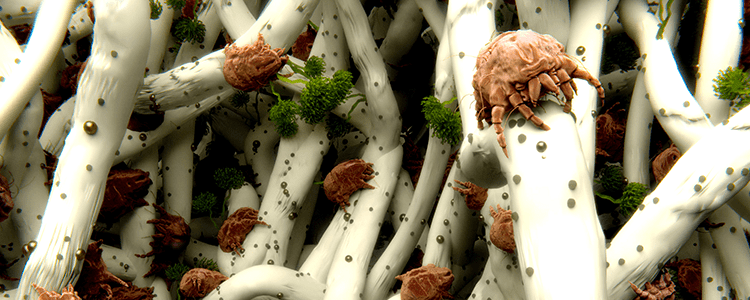
Have you recently experienced a flare-up of a runny nose, persistent coughing, itchy or sore eyes, or sneezing indoors? These symptoms could point to an allergic reaction to dust mites. While house dust mites are invisible to the naked eye and generally harmless to most people, they can cause dust mite allergy symptoms in sensitive individuals.
These tiny arachnids don’t bite, but the real issue lies in their droppings and shed skins, which become part of your home’s airborne dust particles. These microscopic allergens can settle in your bedding, carpets, and upholstery, leading to respiratory issues or skin irritation for those affected.
But don’t worry, in this article, we’ll give you practical tips on how to know if you have dust mites, how to identify signs of dust mites in your home, and most importantly, how to prevent and reduce infestations effectively.
Can you see dust mites?
Can you see dust mites with the naked eye? Can dust mites be seen without a microscope? Unfortunately, no. These tiny creatures are microscopic, usually measuring between 0.2 to 0.3 millimetres, making them almost invisible to the human eye. Unlike their larger cousins – ticks and spiders, dust mites are translucent, which makes spotting them even harder without assistance. To make them visible, many homeowners use a UV flashlight for mites or a microscope dust mite bundle to examine bedding or furniture.
If you suspect a problem, you’ll need a microscope to see dust mites clearly. Under magnification, they resemble miniature eight-legged arachnids, confirming their place in the arachnoid family. Despite being hidden from view, dust mites in your home can still have a major impact on your health, especially if you’re prone to dust mite allergy symptoms.
What size are dust mites?
Dust mites size ranges from 0.2 to 0.3 millimetres, making them extremely difficult to spot without magnification. To put things in perspective, a single dust mite is about the size of a grain of table salt or the thick part of a tin foil sheet. Because of this tiny stature, they often go unnoticed in our everyday environment, yet they thrive in warm, humid areas like beds, sofas, and carpets.
Shockingly, a typical bed mattress may be home to anywhere from 100,000 to 2 million dust mites. That’s one reason why dust mites in your home can be such a persistent issue, especially for allergy sufferers.
What do dust mites look like under a microscope?
Because of their translucent bodies, dust mites are difficult to see, even under a microscope. But if you manage to get a close-up, brace yourself. These tiny creatures are not winning any beauty contests.
Dust mites’ appearance is spider-like, with eight bristly legs, no eyes, and a mouthpart designed to break down dead skin cells. Their glassy exoskeletons add to their alien look, often unnerving even those without arachnophobia. Though disturbing, it’s worth remembering that dust mites don’t bite, they feed on skin flakes and thrive in household dust.
Dust mites vs. Bed bugs: What’s the difference?
Many people confuse dust mites with bed bugs, but these two pests are very different creatures. The only thing they have in common is their preference for warm, dark, and humid environments, like bedding, mattresses, and upholstered furniture.
The most obvious difference lies in their visibility and size. While dust mites are microscopic, measuring just 0.2 to 0.3 mm and impossible to see without a microscope, bed bugs are visible to the naked eye. An adult bed bug is about 5 – 7 mm, roughly the size of an apple seed, making them much easier to detect.
Another key distinction is their appearance and feeding behaviour. Bed bugs have oval-shaped bodies that swell after feeding, changing from yellowish to reddish-brown as they consume more blood. They have antennae, six legs, and are true insects. On the other hand, dust mites, which belong to the arachnid family, have eight legs and feed on dead skin cells, not blood.
Understanding the difference between bed bugs and dust mites is crucial, especially when trying to identify the source of skin irritation, bites, or allergy flare-ups.
Read about the difference between dust mites and bed bugs bites.
Signs of dust mites in your home and body
The most common signs of dust mites are allergic reactions caused by exposure to their faeces and body fragments. When these microscopic allergens are inhaled or come into contact with the skin, the immune system may respond aggressively, producing antibodies to fight off what it mistakenly sees as a threat.
Here are some common dust mite allergy symptoms to watch for. These allergy triggers in homes are often caused by dust mite allergens in mattresses, pillows, and even clothing:
- Watery and itchy eyes
- Runny or congested nose
- Persistent sneezing triggered by dust mite fecal matter or mite excrement in the air.
- Asthma attacks or wheezing
- Itchy, red, or inflamed skin
- Blocked nasal passages
- Irritated throat or mouth
- Facial redness or rashes in babies, especially around the cheeks
- Mild fever or flu-like symptoms
It’s easy to confuse dust mite allergy with a cold or seasonal flu, as the symptoms can overlap. If you’re experiencing these signs frequently, especially at night or when cleaning, it may indicate the presence of dust mites in your environment.
For mild reactions, monitor your health over a couple of weeks. However, if your symptoms are severe or persistent, consult a healthcare professional for proper diagnosis and treatment.
Read A Simple Guide to Get Rid of Clover Mites
Where do dust mites come from and why are they in your home?
Dust mites live in warm, and humid environments, which is why they’re commonly found in homes across the UK. They also thrive in areas with high dust accumulation and environments rich in dead skin cells, especially those shed by humans or pets.These microscopic pests are naturally created by Mother Nature in areas where they can thrive undisturbed. Their main water source is moisture in the air, so they flourish in damp indoor conditions.
Here are the perfect living conditions for dust mites:
- A pleasant, warm temperature of around 21 – 25°C;
- Low-light or dark environments (e.g. under beds or inside sofas);
- 50% to 70% air humidity;
- Nearby a human or animal, as they rely on dead skin cells for food.;
You won’t find dust mites in dry climates like the Sahara Desert, they simply can’t survive without humidity.
Although they don’t feed on blood like bed bugs or ticks, an average person sheds thousands of skin cells per hour, unintentionally supporting a large dust mite population. That’s why you’ll commonly find them in mattresses, carpets, curtains, and upholstered furniture.
While it’s nearly impossible to eliminate all dust mites, there are effective ways to reduce their numbers and minimise their impact on your indoor air quality and allergy symptoms.
How to know if dust mites are present?
There are a few reliable ways to find dust mites, but waiting for allergy symptoms to appear shouldn’t be one of them. Instead, try these methods:
Use a microscope to see dust mites
Because they are microscopic in size, the only way to see dust mites is by using a microscope with at least 10x magnification. These can be found in hobby shops or toy stores and are useful for basic home testing. Some test kits even include images of dust mites on skin or fabrics to help homeowners match what they’re seeing under magnification.
To examine for mites:
- Collect dust samples using clear tape
- Target areas like your bed, sofa, carpets, and dark corners of bedrooms or living rooms
- Place the samples under the scope and look for tiny eight-legged creatures or brownish faecal particles
Even if you don’t spot mites directly, their waste can indicate a large dust mite population.
Use a dust mite test kit
A more user-friendly option is a dust mite test kit, which you can find online or at local hardware stores and pharmacies. These kits test for dust mite allergens and offer two types:
- Lab-analyzed kits, where you send your sample back for results
- At-home kits, where you get an immediate reading
Always follow the included instructions to ensure an accurate reading of allergen concentration in your living space.
How to prevent dust mites
Dust mites thrive in mattresses, bedding, and upholstered furniture, feeding on dead skin cells and flourishing in humid environments. To control their population, focus on reducing dust buildup and maintaining low humidity. Here’s how:
- Use a HEPA vacuum for dust mites or dust mite filter vacuum weekly.
- Protect your bed with a dust mite mattress cover, hypoallergenic pillow protector, or anti-dust mite mattress liner.
- Spray regularly with an anti-dust mite spray or use anti-allergen laundry detergent for fabrics.
- Try a dehumidifier for dust mites to keep air dry and unwelcoming for these pests.
Read more: How to Get Rid of Dust Mites?
Conclusion
Dust mites can be bad roommates. Many people discover that they have allergies caused by the tiny arachnoids’ faeces and dead cells, wondering how to deal with the problem. While it’s quite impossible to get rid of all dust mites in your home, by following our advice, you can decrease their numbers. Lowering the mites’ population can prevent the allergic reactions that some individuals experience.
Not sure if you have dust mites?
We provide helpful information according to the expertise and knowledge of the pest technicians. However, we don’t offer any medical advice.



